|
Books Should Be Free Loyal Books Free Public Domain Audiobooks & eBook Downloads |
|
|
Books Should Be Free Loyal Books Free Public Domain Audiobooks & eBook Downloads |
|
Animal Books |
|---|
Book type:
Sort by:
View by:
|
By: Aesop (620 BC - 563 BC) | |
|---|---|
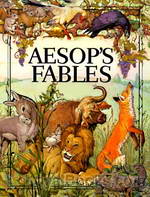 Aesop's Fables
Aesop's Fables
As children, our first experience of the magic of talking animals, the conflict between good and evil, the battle of wits between the cunning and the innocent most probably came from Aesop's Fables. These delightful, pithy and brief narratives are simple, easy to understand and convey their message in a memorable and charming fashion. Aesop's Fables by Aesop consists of about 600 tales, some well-loved and familiar, others less known but just as entertaining and educative and help us map the perimeters of our moral universe... | |
 The Aesop for Children
The Aesop for Children
THE AESOP FOR CHILDRENTHE WOLF AND THE KIDThere was once a little Kid whose growing horns made him think he was a grown-up Billy Goat and able to take care of himself. So one evening when the flock started home from the pasture and his mother called, the Kid paid no heed and kept right on nibbling the tender grass. A little later when he lifted his head, the flock was gone. He was all alone. The sun was sinking. Long shadows came creeping over the ground. A chilly little wind came creeping with them making scary noises in the grass... | |
By: Robert Louis Stevenson (1850-1894) | |
|---|---|
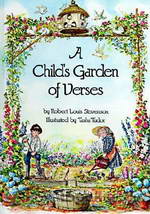 A Child's Garden of Verses
A Child's Garden of Verses
Beloved by many generations of children, A Child’s Garden of Verses is a beautiful collection of children’s poetry. Sometimes thoughtful, sometimes whimsical, but always fun. | |
By: H. G. Wells (1866-1946) | |
|---|---|
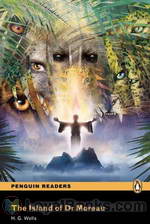 The Island of Dr. Moreau
The Island of Dr. Moreau
One of the first instances of science fiction, Wells’ classic tale published in 1986 examines various controversial philosophical issues active at the time of its publication, most notable being the implications of vivisection and degeneration. Narrated by its everyman protagonist Edward Prendick, the novel follows the events of his stay at a mysterious island, home to ghastly secrets, horrors, and incomprehensible experiences. Furthermore, the novel features innovative themes which have become iconic in the modern science fiction genre, including moral and ethical responsibility, evolution, and man’s interference with the course of nature... | |
By: Rudyard Kipling (1865-1936) | |
|---|---|
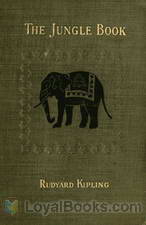 The Jungle Book
The Jungle Book
Originally written for his young daughter Josephine, who died tragically aged six, The Jungle Book by Rudyard Kipling is a collection of short stories which were published separately in magazines before being compiled into a book. The stories are in the form of fables, where animals communicate and speak to each other as humans do and the purpose of each story was to convey a moral or message to the reader. Modern readers would be more familiar with the Disney animated version in which Mowgli the little “man-cub” is raised by wolves... | |
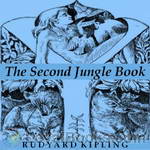 The Second Jungle Book
The Second Jungle Book
Kipling shows his love of the sub continent and its people and understanding of their beliefs in these tales. An older Mowgli roams the jungle with his old friends and investigates the ways of his people, a Prime Minister becomes wandering holy man, scavengers tell their tale and we leave India for the far,far north of Canada. | |
 Kipling Reader
Kipling Reader
These are selections of Kipling's writings; some poems, some fiction, some history but all by the master storyteller himself. Rikki-Tikki-Tavi' -- William the Conqueror, Part I -- William the Conqueror, Part II -- Wee Willie Winkie -- A matter of fact -- Mowgli's brothers -- The lost legion -- Namgay Doola -- A germ-destroyer -- 'Tiger! Tiger!' -- Tods' amendment -- The story of Muhammad Din -- The finances of the gods -- Moti Guj, Mutineer. | |
By: P. G. Wodehouse (1881-1975) | |
|---|---|
 The Man With Two Left Feet, and Other Stories
The Man With Two Left Feet, and Other Stories
The Man With Two Left Feet, and Other Stories is a collection of short stories by P. G. Wodehouse, first published in the United Kingdom on March 8, 1917 by Methuen & Co., London, and in the United States in 1933 by A.L. Burt and Co., New York. All the stories had previously appeared in periodicals, usually the Strand in the UK and the Red Book magazine or the Saturday Evening Post in the US. It is a fairly miscellaneous collection — most of the stories concern relationships, sports and household... | |
By: Edgar Allan Poe (1809-1849) | |
|---|---|
 The Raven
The Raven
When a modern film script draws inspiration from a poem written more than a century ago, readers can judge its impact on our collective imagination. Such is the resonance of the poem "The Raven" by Edgar Allan Poe. First published in 1845, "The Raven" is a masterpiece of atmosphere, rhythmic quality and use of language. Constructed in narrative form, it tells the story of a young man who is mourning the loss of his beloved. One December night as he wearily sits up browsing through a classical volume, a mysterious tapping against his window disturbs him... | |
By: Harriet Beecher Stowe (1811-1896) | |
|---|---|
 Queer Little Folks
Queer Little Folks
A wonderful children's classic - a collection of moral stories told by animals in the woods. The wittily written stories explore various issues in a fun way. | |
By: Anna Sewell | |
|---|---|
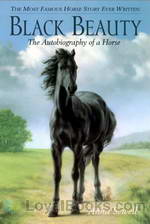 Black Beauty
Black Beauty
This unique tale is narrated by a lovely, gentle horse named Black Beauty and has remained a children's classic since it was first published in 1877. It earned eternal name and fame for its author Anna Sewell, an invalid who died within a few months of publication. According to current estimates, it has sold more than fifty million copies world wide, been translated into many languages and delighted generations of children. The original title page reads: Black Beauty: Translated from the original Equine by Anna Sewell and this gives the reader an instant glimpse into what the book will be about... | |
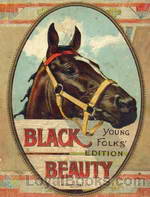 BLACK BEAUTY - Young Folks Edition
BLACK BEAUTY - Young Folks Edition
The same beloved story of the adventures and misadventures and of a young horse that we all know and love, but rewritten by the author for young people with much shorter chapters. All of the pathos, tenderness and fun are still there, just written for a younger audience. While forthrightly teaching animal welfare, it also teaches how to treat people with kindness, sympathy, and respect. | |
By: Jean de La Fontaine (1621-1695) | |
|---|---|
 Fables in Rhyme for Little Folks
Fables in Rhyme for Little Folks
Several of La Fontaine’s fables, translated into English by W. T. Larned. | |
By: Thornton W. Burgess (1874-1965) | |
|---|---|
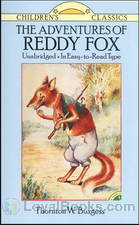 The Adventures of Reddy Fox
The Adventures of Reddy Fox
These delightful stories created by the writer known famously as the Bedtime Story Man provide hours of endless enjoyment for readers both young and old. His daily newspaper column which he wrote without a break from 1912 through to 1960 featured a host of engaging characters and their lively pranks and doings. In this charmingly illustrated volume, Reddy Fox, the young hero is sent to stay with his grandma. Grandmother Fox is the “wisest, slyest and smartest fox in all the country around” and she takes it upon herself to educate Reddy in the things that every fox should know! Thus begins a battle of wits between Farmer Brown, Farmer Brown's Boy, Reddy and Grandmother Fox... | |
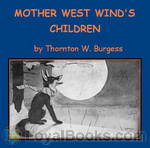 Mother West Wind's Children
Mother West Wind's Children
“You can’t fool old Mother Nature. No, Sir, you can’t fool old Mother Nature, and it’s of no use to try.” The animals of the Green Meadows and Green Forest have little adventures while Grandfather Frog tells stories to Mother West Wind’s children, the Merry Little Breezes. | |
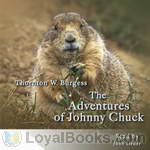 The Adventures of Johnny Chuck
The Adventures of Johnny Chuck
The Adventures of Johnny Chuck is another in the long list of children’s books by conservationist Thornton W. Burgess. In this story, it is spring time and a young chuck’s fancy turns to thoughts of … traveling, protecting one’s turf, finding a new home, and yes, love. Along the way, we learn little lessons about life such as there are good and bad kinds of pride, the importance of keeping secrets and that, even in the animal world, the three most important factors in determining the desirability of property are “location, location, location.” | |
 Old Mother West Wind
Old Mother West Wind
Thornton Waldo Burgess (January 14, 1874 – June 5, 1965) was a conservationist and author of children’s stories. He loved the beauty of nature and its living creatures so much that he wrote about them for 50 years. By the time he retired, he had written more than 170 books. Many of his outdoor observations in nature were used as plots for his stories. In his first book, “Old Mother West Wind,” published in 1910, the reader meets many of the characters found in later books and stories. These... | |
By: Hugh Lofting (1886-1947) | |
|---|---|
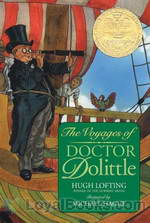 The Voyages of Doctor Dolittle
The Voyages of Doctor Dolittle
The delightfully eccentric Doctor Dolittle, rendered immortal on screen by the gifted Rex Harrison, has remained a firm favorite with generations of children ever since he made his debut in an earlier novel, The Story of Doctor Dolittle. In his second outing titledThe Voyages of Doctor Dolittle, the maverick physician takes on a new assistant, Tommy Stubbins. The story is structured as a first person account given by Tommy, who is now a very old man. The boy who was the son of the village cobbler first meets Doctor Dolittle when he takes a hurt squirrel to the doctor for treatment... | |
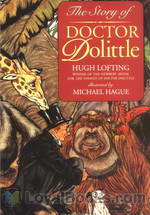 The Story of Doctor Dolittle
The Story of Doctor Dolittle
An adventurous children’s novel, The Story of Doctor Dolittle is the first book in the Doctor Dolittle series. The novel depicts the many adventures of Dr. John Dolittle as he learns the language of animals and takes on various feats including exotic travel, a dangerous encounter with pirates, and a mission to set right from wrong. The novel begins with the introduction of Dr. John Dolittle, an animal lover and respected physician, who lives in the small English town of Puddleby-on-the-Marsh with his unmarried sister... | |
By: L. Leslie Brooke (1862-1940) | |
|---|---|
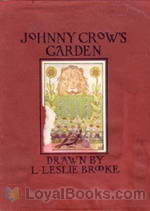 Johnny Crow's Garden
Johnny Crow's Garden
A beautifully illustrated children’s picture book featuring Johnny Crow who made a garden in which a variety of animals do bizarre things in rhyme. | |
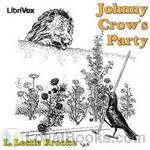 Johnny Crow's Party
Johnny Crow's Party
A beautifully illustrated children’s picture book. Listen to the narration while you read along viewing a variety of delightful animals doing strange things such as the kangaroo who tried to paint the roses blue. This is a follow up to Johnny Crow’s Garden. | |
By: Gene Stratton-Porter (1863-1924) | |
|---|---|
 Song of the Cardinal
Song of the Cardinal
The Song of the Cardinal is about a big male Cardinal who lives in a tree near a farmer and his wife. The Cardinal immediately starts to sing to find himself a mate. Meanwhile the farmer and his wife enjoy watching this boisterous bird and seeing what he does. He does find a mate and through his singing the farmer and his wife's marriage is rejuvenated. It's a happy little parallel love story that will sweep you off your feet! | |
By: James Oliver Curwood (1878-1927) | |
|---|---|
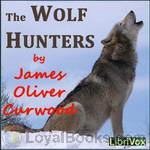 The Wolf Hunters
The Wolf Hunters
Follow Roderick and his friends Wabi and Mukoki on their adventures in the pristine North. They fight voracious wolves, hostile natives, and the vicious elements of nature, while on the hunt. Getting more than they bargained for, they discover a mysterious cabin, and stumble upon a secret that has lain hidden for half a century. Full of twists and turns, danger and suspense, The Wolf Hunters, the prequal to The Gold Hunters, is an excellent read. (Introduction by Brian Adey) | |
By: Robert Michael Ballantyne (1825-1894) | |
|---|---|
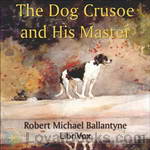 The Dog Crusoe and His Master
The Dog Crusoe and His Master
This is a story of an adventure involving a young man, his dog, and two friends. Together they wander through the Western prairies on a mission to make peace between the “pale-faces” and the “Red men”. They face many perils and become heroes many times over. This wonderful story takes the characters (and the reader) on an action-packed journey through the Western prairies during the times when relations between the white man and the Natives were not always peaceful. | |
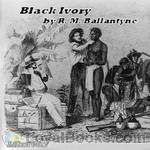 Black Ivory
Black Ivory
Although the book's title Black Ivory denotes dealing in the slave trade it is not our heroes who are doing it. At the very first chapter there is a shipwreck, which leaves the son of the charterer of the sinking ship, and a seaman friend of his, alone on the east coast of Africa, where Arab and Portuguese slave traders were still carrying out their evil trade, despite the great efforts of patrolling British warships to limit it and free the unfortunates whom they found being carried away in the Arab dhows... | |
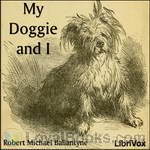 My Doggie and I
My Doggie and I
This story surrounds a child waif, a young woman, a young gentleman doctor, and an elderly lady. This tale unfolds the story of a bond that brings these unlikely friends together and merges their separate paths of life into one common path. The bond is "Dumps", or "Pompey", the "doggie". With many twists, turns, and uncertainties, the ending may surprise the reader. All's well that ends well in this doggie "tail". (Introduction by Allyson Hester) | |
By: Beatrix Potter (1866-1943) | |
|---|---|
 Collection of Beatrix Potter Stories
Collection of Beatrix Potter Stories
What can we say about the delightful Beatrix Potter stories? Starting with the naughty Peter Rabbit and his mis-adventures, progressing through The Tale of Mrs. Tiggy-Winkle whose funny name is just the start of the interesting things about her, then expounding on the Tale of Jemima Puddle-Duck, and many many more, these stories are all gems of the art of story telling. This is your chance to enjoy reading them aloud and recording them for children to enjoy listening to in the years and decades to come. Aren't you curious to learn more about the Fierce Bad Rabbit? Or the Tale of the Two Bad Mice? This is your chance to read aloud. And remember to have fun !! | |
By: Eleanor Hallowell Abbott (1872-1958) | |
|---|---|
 Peace On Earth, Good-Will To Dogs
Peace On Earth, Good-Will To Dogs
“If you don’t like Christmas stories, don’t read this one!And if you don’t like dogs I don’t know just what to advise you to do!For I warn you perfectly frankly that I am distinctly pro-dog and distinctly pro-Christmas, and would like to bring to this little story whatever whiff of fir-balsam I can cajole from the make-believe forest in my typewriter, and every glitter of tinsel, smudge of toy candle, crackle of wrapping paper, that my particular brand of brain and ink can conjure up on... | |
By: John Muir (1838 – 1914) | |
|---|---|
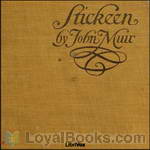 Stickeen
Stickeen
A great dog story, a well told tale — the naturalist and adventurer John Muir recounts how he and his companion, a dog named Stickeen, each, alone, confronted and conquered their fears of an icy Alaskan glacier in 1880. | |
By: Joel Chandler Harris (1848-1908) | |
|---|---|
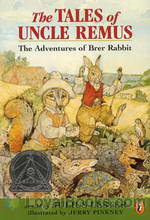 Uncle Remus
Uncle Remus
Bearing a striking resemblance to Aesop of Aesop's Fables fame, American author Joel Chandler Harris' Uncle Remus is also a former slave who loves to tell simple and pithy stories. Uncle Remus or to give it its original title, Uncle Remus: His Songs and His Sayings was published in late 1880 and received instant acclaim. The book was reviewed in hundreds of journals and newspapers across the country, leading to its immense success, both critical and financial. “Remus” was originally a fictional character in a newspaper column... | |
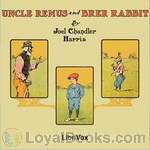 Uncle Remus and Brer Rabbit
Uncle Remus and Brer Rabbit
Uncle Remus' stories feature a trickster hero called Br'er Rabbit ("Brother" Rabbit), who uses his wits to slide out of trouble and gain the advantage over the slower witted other animals, many of whom are trying to eat him. Br'er Rabbit stories were mostly collected directly from the afro-american oral story-telling tradition and are said to be a direct interpretation of Yoruba tales of Hare. This book contains 11 unique stories and was the last one published before the author's death. (Introduction by Phil Chenevert) | |
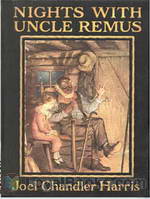 Nights With Uncle Remus
Nights With Uncle Remus
That the little boy loved Uncle Remus and his stories was so obvious that the tale-spinning sessions began drawing additional listeners. Daddy Jack, an old "Africa man" visiting from down-state; Sis Tempy, the strong chief of the mansion's servants; and Tildy, a young and pretty servant-girl - all found their way to Uncle Remus' rude cabin when their duties or interests permitted, to sit around the hearth and hear the wonderful tales of the animals, and foremost among them, Brer Rabbit and Brer Fox... | |
By: Guy Wetmore Carryl (1873-1904) | |
|---|---|
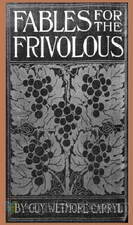 Fables for the Frivolous
Fables for the Frivolous
The Urban Rat and the Suburban Rat, The Persevering Tortoise and the Pretentious Hare, The Ambitious Fox and the Unapproachable Grapes.... If some of these titles seem vaguely familiar to you, you wouldn't be mistaken! Fables for the Frivolous by Guy Wetmore Carryl contains some well-known fables in a modern packaging, with a delightful new twist! The complete title of the original published in 1898 was Fables for the Frivolous (With apologies to La Fontaine) and it was the first published work of this gifted American journalist, humorist and poet... | |
By: Kate Douglas Wiggin (1856-1923) | |
|---|---|
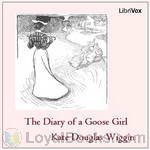 The Diary of a Goose Girl
The Diary of a Goose Girl
The "Goose Girl" is a young and somewhat independent lady who, in fleeing from her lover with whom there had been a "little tiff," became a "paying guest" at poultry farm in a quiet, out-of-the-way Sussex village, in the care of which she participates. From the author of Mother Carey's Chickens, The Bird's Christmas Carol, etc. | |
By: Arthur Scott Bailey (1877-1949) | |
|---|---|
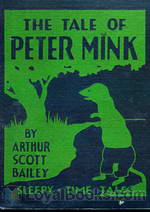 The Tale of Peter Mink
The Tale of Peter Mink
Arthur Scott Bailey (1877 – 1949) was author of more than forty children’s books. Bailey’s writing has been described thusly by the Newark Evening News: “Mr. Bailey centered all his plots in the animal, bird and insect worlds, weaving natural history into the stories in a way that won educator’s approval without arousing the suspicions of his young readers. He made it a habit to never ‘write down’ to children and frequently used words beyond the average juvenile vocabulary, believing that youngsters respond to the stimulus of the unfamiliar.” | |
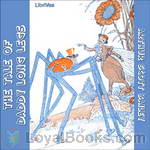 The Tale Of Daddy Long Legs
The Tale Of Daddy Long Legs
Summary text (Arthur Scott Bailey (1877 – 1949) was author of more than forty children’s books. He was born on November 15, 1877, in St. Albans, Vermont, United States, the second child of Winfield Scott Bailey and Harriet Sarah Goodhue. THERE was great excitement in the neighborhood of Farmer Green’s house. Rusty Wren had found some strange tracks. And nobody knew whose they were. Now, when they were puzzled like that the field- and forest-folk usually went straight to Mr. Crow for advice... | |
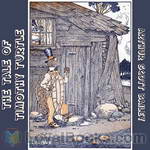 The Tale of Timothy Turtle
The Tale of Timothy Turtle
One of Bailey’s “Sleepy-Time Tales,” this is the story of Timothy Turtle, a grumpy old turtle trying to live his life alongside Black Creek. Timothy’s adventures lead him to encounters with other Black Creek creatures, Fatty Coon, Mr. Crow, Brownie Beaver, Peter Mink, Ferdinand Frog, and even the local boy, Johnnie Green. | |
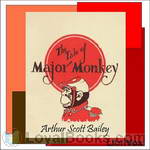 The Tale of Major Monkey
The Tale of Major Monkey
Arthur Scott Bailey was the author of more than forty children’s books.Mr. Bailey centered all his plots in the animal, bird and insect worlds, weaving natural history into the stories in a way that won educator’s approval without arousing the suspicions of his young readers. | |
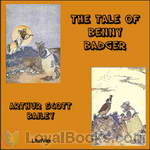 The Tale of Benny Badger
The Tale of Benny Badger
Mr. Bailey centered all his plots in the animal, bird and insect worlds, weaving natural history into the stories in a way that won educator’s approval without arousing the suspicions of his young readers. He made it a habit to never ‘write down’ to children and frequently used words beyond the average juvenile vocabulary, believing that youngsters respond to the stimulus of the unfamiliar.” | |
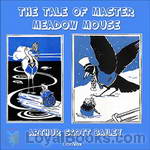 The Tale of Master Meadow Mouse
The Tale of Master Meadow Mouse
This volume in the series, Sleepy-Time Tales, follows the adventures of Master Meadow Mouse as he moves his home to various (safer) places, and tells how he cleverly avoids creatures such as Fatty Coon, Mr. Crow, and Mr. Great Blue Heron, just to name a few. | |
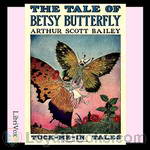 The Tale of Betsy Butterfly
The Tale of Betsy Butterfly
Arthur Scott Bailey (1877 – 1949) was the author of more than forty children’s books. “Mr. Bailey centered all his plots in the animal, bird and insect worlds, weaving natural history into the stories in a way that won educator’s approval without arousing the suspicions of his young readers. He made it a habit to never ‘write down’ to children and frequently used words beyond the average juvenile vocabulary, believing that youngsters respond to the stimulus of the unfamiliar.” (Wikipedia) | |
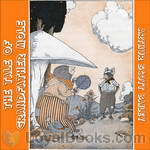 The Tale of Grandfather Mole
The Tale of Grandfather Mole
Arthur Scott Bailey (1877 – 1949) was the author of more than forty children’s books.Bailey’s writing has been described thusly by the Newark Evening News: “Mr. Bailey centered all his plots in the animal, bird and insect worlds, weaving natural history into the stories in a way that won educator’s approval without arousing the suspicions of his young readers. He made it a habit to never ‘write down’ to children and frequently used words beyond the average juvenile vocabulary, believing that youngsters respond to the stimulus of the unfamiliar.” | |
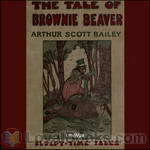 The Tale of Brownie Beaver
The Tale of Brownie Beaver
Arthur Scott Bailey was the author of more than forty children’s books, centered all his plots in the animal, bird and insect worlds, weaving natural history into the stories in a way that won educator’s approval without arousing the suspicions of his young readers. The Tale of Brownie Beaver is another adventure of the friends and neighbours of Pleasant Valley. You will hear how Brownie keeps a house safe from a Freshet and how he receives his weekly newspaper and not to forget the making of a new suit. | |
 Tale of Miss Kitty Cat
Tale of Miss Kitty Cat
The rats and the mice thought that Miss Kitty Cat was a terrible person. She was altogether too fond of hunting them. They agreed, however, that in one way it was pleasant to have her about the farmhouse. When she washed her face, while sitting on the doorsteps, they knew—so they said!—that it was going to rain. And then Mrs. Rat never would let her husband leave home without taking his umbrella. As a rule Miss Kitty Cat didn't look at all frightful. Almost always she appeared quite unruffled, going about her business in a quiet way and making no fuss over anything... | |
 Tale of Dickie Deer Mouse
Tale of Dickie Deer Mouse
"All the four-footed folk in the neighborhood agreed that Dickie Deer Mouse was well worth knowing. Throughout Pleasant Valley there was no one else so gentle as he . . . He was always tastefully dressed in fawn color and white. And except sometimes in the spring, when he needed a new coat, he was a real joy to see. For he both looked and acted like a well-bred little person."In one of Bailey's "Sleepy-Time Tales", we follow a polite little mouse called Dickie as he hunts for a summer home, finds food, and avoids various predators... | |
 Tale of Buster Bumblebee
Tale of Buster Bumblebee
Buster Bumblebee and his family move into a new home. Excitement and buzzing abound. Buster meet a strange fellow called a carpenter bee, way too many chirpy crickets, and even finds his own long lost sister. Later in his adventurous life, Buster learns of another kind of Bee, a Raising Bee and how much food is available for everyone there. All in all, this tale will bring smiles and grins to listeners young and old as it tells of Buster Bumblebee, a young bee with a lot to learn but a heart of gold. | |
 Tale of Cuffy Bear
Tale of Cuffy Bear
A whimsical tale about the life of Cuffy bear on Blue Mountain. Cuffy is a very mischevious, disobedient bear who gets into all kinds of scrapes because he refuses to listen to his parents. He most always ends up in trouble or pain as a result of his mishaps. | |
 Tale of Mrs. LadyBug
Tale of Mrs. LadyBug
Have you ever seen a LadyBug and wondered what the cute little bug with the dots on her back was thinking? And why she seemed in such a rush? Well here is your chance to peek into her thoughts and enjoy some of her daily triumphs and disasters. "Little Mrs. Ladybug was a worker. Nobody could deny that. To be sure, she had to stop now and then to talk to her neighbors, because Mrs. Ladybug dearly loved a bit of gossip. At the same time there wasn't anyone in Pleasant Valley that helped Farmer Green more than she did... | |
 Tale of Pony Twinkleheels
Tale of Pony Twinkleheels
"When Johnnie Green sent him along the road at a trot, Twinkleheels' tiny feet moved so fast that you could scarcely have told one from another. Being a pony, and only half as big as a horse, he had to move his legs twice as quickly as a horse did in order to travel at a horse's speed. Twinkleheels' friends knew that he didn't care to be beaten by any horse, no matter how long-legged. "It's spirit, not size, that counts," Farmer Green often remarked as he watched Twinkleheels tripping out of the yard, sometimes with Johnnie on his back, sometimes drawing Johnnie in a little, red-wheeled buggy... | |
 Tale of Henrietta Hen
Tale of Henrietta Hen
The Tale of Henrietta Hen is a cute children's book filled with the adventures of a hen named Henrietta. | |
 Tale of Freddie Firefly
Tale of Freddie Firefly
He was able to draw a deep breath again as they reached the field of red clover, where Peppery Polly Bumblebee settled quickly upon a clover-top and began sucking up the sweet nectar with her long tongue. For some time she worked busily without saying a word. And indeed, how could she have spoken with her tongue buried deep in the heart of a clover blossom? (From The Tale of Freddy Firefly) | |
By: Walter Crane (1845-1915) | |
|---|---|
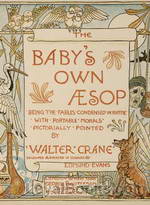 Baby's Own Aesop
Baby's Own Aesop
“Baby’s Own Aesop” presents the fables as one-stanza limericks, each “pictorially pointed” by Walter Crane, the noted painter and illustrator. He apprenticed to master wood-engraver, William James Linton, who furnished the draft of the book’s poems for Crane to edit. | |
By: Frank Richard Stockton | |
|---|---|
 Round-about Rambles
Round-about Rambles
ROUND-ABOUT RAMBLES, In Lands of FACT AND FANCYBY FRANK R STOCKTONPREFACECome along, boys and girls! We are off on our rambles. But please do not ask me where we are going. It would delay us very much if I should postpone our start until I had drawn you a map of the route, with all the stopping-places set down. We have far to go, and a great many things to see, and it may be that some of you will be very tired before we get through. If so, I shall be sorry; but it will be a comfort to think that none of us need go any farther than we choose... | |
By: George Alfred Henty (1832-1902) | |
|---|---|
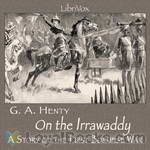 On the Irrawaddy, A Story of the First Burmese War(1897)
On the Irrawaddy, A Story of the First Burmese War(1897)
With the exception of the terrible retreat from Afghanistan, none of England's many little wars have been so fatal--in proportion to the number of those engaged--as our first expedition to Burma. It was undertaken without any due comprehension of the difficulties to be encountered, from the effects of climate and the deficiency of transport; the power, and still more the obstinacy and arrogance of the court of Ava were altogether underrated; and it was considered that our possession of her ports would assuredly bring the enemy, who had wantonly forced the struggle upon us, to submission... | |
By: Helen Hunt Jackson (1830-1885) | |
|---|---|
 Letters from a Cat
Letters from a Cat
Letters from a Cat: published by her mistress for the benefit of all cats and the amusement of little children is a collection of letters that a little girl receives from her pet while she is away from home. They tell of her pet’s adventures and misadventures. The book includes a preface which gives a little biography of the cat including its sad demise. H.H. was the alias of Helen Maria Hunt Jackson (1830 –1885) who is better known for her novel Ramona in which she dramatized the mistreatment of Native Americans and which formed part of her campaign for improved treatment of Native Americans by the U.S. Government. | |
By: Carl Sandburg (1878-1967) | |
|---|---|
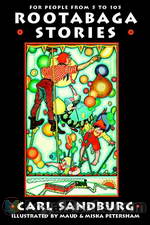 Rootabaga Stories
Rootabaga Stories
Carl Sandburg is beloved by generations of children for his Rootabaga Stories and Rootabaga Pigeons (which is not in the public domain), a series of whimsical, sometimes melancholy stories he originally created for his own daughters. The Rootabaga Stories were born of Sandburg’s desire for “American fairy tales” to match American childhood. He felt that the European stories involving royalty and knights were inappropriate, and so populated his stories with animals, skyscrapers, trains, corn fairies, and other colorful characters. | |
By: Richard Jefferies (1848-1887) | |
|---|---|
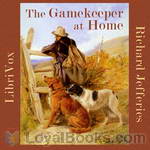 The Gamekeeper at Home
The Gamekeeper at Home
Richard Jefferies (1848 – 1887) was born and spent his childhood on a farm at Coate,Wiltshire. He joined the ‘Wiltshire and Gloucestershire Standard’ in 1868 and also started to write articles and pamphlets on various agricultural issues and local history topics. He is best known for his depiction of English rural life in essays, books of natural history, and novels. This classic of English nature writing gives an idea of the life of a gamekeeper in southern England in the second half of the nineteenth century. | |
By: Elliott O’Donnell (1872—1965) | |
|---|---|
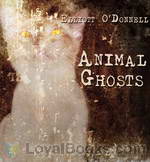 Animal Ghosts
Animal Ghosts
Summary: This is a collection of ghost stories in which the antagonists are various animals. Divided up into chapters of ghost sightings by each group of animals, you will hear of hauntings by dogs, cats, birds, jungle animals, etc. (Summary by Allyson Hester) | |
By: Arabella B. Buckley (1840-1929) | |
|---|---|
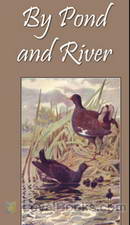 By Pond and River
By Pond and River
In By Pond and River, another of Arabella Buckley’s wonderful science books for children, she explains the habitats of ponds and rivers, exposing children to the animals and plant life that are found there. | |
By: James Otis (1848-1912) | |
|---|---|
 Toby Tyler or Ten Weeks with a Circus
Toby Tyler or Ten Weeks with a Circus
Toby Tyler tells the story of a ten year-old orphan who runs away from a foster home to join the traveling circus only to discover his new employer is a cruel taskmaster. The difference between the romance of the circus from the outside and the reality as seen from the inside is graphically depicted. Toby's friend, Mr. Stubbs the chimpanzee, reinforces the consequences of what happens when one follows one's natural instincts rather than one's intellect and conscience, a central theme of the novel. | |
By: Ethel C. Pedley (1859-1898) | |
|---|---|
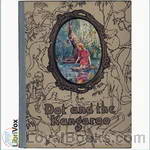 Dot and the Kangaroo
Dot and the Kangaroo
Dot and the Kangaroo, written in 1899, is a children’s book by Ethel C. Pedley about a little girl named Dot who gets lost in the Australian outback and is eventually befriended by a kangaroo and several other marsupials. | |
By: John Burroughs (1837-1921) | |
|---|---|
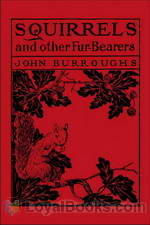 Squirrels and other Fur-Bearers
Squirrels and other Fur-Bearers
Squirrels and other Fur-Bearers, a collection of essays by American naturalist and essayist, John Burroughs, provides fascinating insight into the daily life of small woodland creatures. Included in these essays are Burrough’s personal observations of squirrels, rabbits, mink, and chipmunks, as well as numerous other small mammals. Highly recommended for anyone, both young and old, with an interest in nature and wildlife! | |
 Bird Stories from Burroughs
Bird Stories from Burroughs
What a better way to learn about birds than to read this delightful collection of interesting bird stories! John Burroughs was a nature essayist. These creative, observation- and emotion-driven stories about birds (largely from the Northeastern states), have been gathered together into a single volume from all his various works. Every chapter follows one species of birds, and the chapters have been arranged chronologically according to the time of the bird's arrival during the year. This collection has lovely illustrations of the birds by Louis Agassiz Fuertes, and some stories also have poems to go along with them. | |
By: H. Rider Haggard (1856-1925) | |
|---|---|
 The Brethren
The Brethren
Set in the days of the Crusaders, this books tells of a young maiden named Rosamund, and her twin cousins. Godwin is the grey eyed thoughtful man, and Wulf is the blue eyed warrior. They are both knights of England and they are both in love with their fair cousin. But the riddle of the story is which does Rosamund love?The adventure begins when Rosamund is taken from England and carried to the East. The plot thickens as the two young knights follow her in hopes of rescuing her from the Muslim leader, Saladin... | |
By: William W.Denslow (1856-1915) | |
|---|---|
 Denslow's Three Bears
Denslow's Three Bears
This version of the classic tale of the three bears has a heroine named Golden Hair. The jolly bears, instead of chasing her away from their home, come to live with her at Grandmother’s house. The recording can be enjoyed by itself, or you can read along. | |
By: Oliver Optic | |
|---|---|
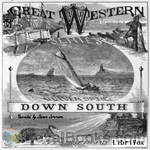 Down South or Yacht Adventure in Florida
Down South or Yacht Adventure in Florida
"Down South" is the fifth and last volume but one of the "Great Western Series." The action of the story is confined entirely to Florida; and this fact may seem to belie the title of the Series. But the young yachtsman still maintains his hold upon the scenes of his earlier life in Michigan, and his letters come regularly from that State. If he were old enough to vote, he could do so only in Michigan; and therefore he has not lost his right to claim a residence there during his temporary sojourn in the South... | |
By: William Joseph Long (1867-1952) | |
|---|---|
 Ways of Wood Folk
Ways of Wood Folk
Late nineteenth-century naturalist William J. Long invites us in to the secret worlds of the woodland animals. Containing Long's own animal observations along with stories related to him by other humans who inhabit the woods, these stories give us an insight into the behavior of wild animals as they go about their lives in their own secret places deep in the forests of eastern North America. Although Long was accused in his day of anthropomorphizing the animals he wrote about, readers who are familiar with any of the animals he writes of will have glimpses of recognition at behaviors they have seen for themselves and explore the deeper meanings these actions have in that animal's life... | |
 Wilderness Ways
Wilderness Ways
Late nineteenth-century naturalist William J. Long invites us into the secret worlds of woodland animals in this, his second, fascinating book. Long's stories of the secret lives of woodland animals come from time he spent in the woods, observing the behaviors and characteristics of the wilderness inhabitants directly. His method? Sit quietly, wait (sometimes for hours), and the animals will come. This book, unlike his first, Ways of Wood Folk, seems to be directed at his critics who accused him... | |
By: Thomas Gilbert Pearson (1873-1943) | |
|---|---|
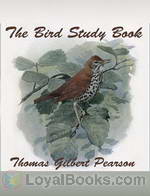 The Bird Study Book
The Bird Study Book
Do you enjoy birdwatching? Would you like to learn a little more about the early conservations efforts to protect wild birds? In the Preface to The Bird Study Book, Pearson tells us “This book was written for the consideration of that ever-increasing class of Americans who are interested in acquiring a greater familiarity with the habits and activities of wild birds. Attention is also given to the relation of birds to mankind and the effect of civilisation on the bird-life of the country. ” An avid ornithologist, T... | |
By: Sir George Webbe Dasent (1817-1896) | |
|---|---|
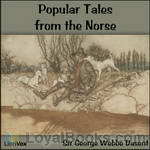 Popular Tales from the Norse
Popular Tales from the Norse
The most careless reader can hardly fail to see that many of the Tales in this volume have the same groundwork as those with which he has been familiar from his earliest youth. They are Nursery Tales, in fact, of the days when there were tales in nurseries–old wives’ fables, which have faded away before the light of gas and the power of steam. (Excerpt from Popular Tales from the Norse.) | |
By: Ernest Thompson Seton | |
|---|---|
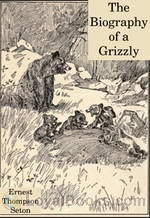 The Biography of a Grizzly
The Biography of a Grizzly
I first read this little book when I was in the fifth grade, and now more than fifty years later, I still find it fascinating. Ernest Thompson Seton was a man with a concern for nature her creatures and an excellent story teller. I could almost feel Wahb, the great grizzly’s pain and frustration as he tried to avoid contact with humans and just be left alone to carry out his bear business. Listening to this audio book will be an hour and a half well spent.Summary by Mike Vendetti, Narrator. | |
 Wild Animals I Have Known
Wild Animals I Have Known
Wild Animals I Have Known is an 1898 book by naturalist and author Ernest Thompson Seton. The first entry in a new genre of realistic wild-animal fiction, Seton's first collection of short stories quickly became one of the most popular books of its day. "Lobo the King of Currumpaw", the first story in the collection, was based upon Seton's experience hunting wolves in the southwestern United States. It became a classic, setting the tone for his future works that would similarly depict animals—especially predators who were often demonized in literature—as compassionate, individualistic beings. | |
By: Anton Chekhov (1860-1904) | |
|---|---|
 Kashtanka
Kashtanka
"Kashtanka," a shaggy-dog story penned by Anton Chekhov in seven parts and first published in 1887, relates the experiences of its eponymous heroine, a fox-faced, reddish dachshund-mix, whose name means 'little chestnut.' After her detestation of music causes her to become separated from the carpenter with whose family she had been living, Kashtanka finds herself taken up by an unusual vaudevillian and goes to live among an assortment of other intelligent animals, each of whom is observed with the characteristic empathy and humor that stamp Chekhov's work. | |
By: Abbie Farwell Brown (1871-1927) | |
|---|---|
 Curious Book of Birds
Curious Book of Birds
Now the interesting facts about birds we have always with us. We can find them out for ourselves, which is a very pleasant thing to do, or we can take the word of others, of which there is no lack. But it is the quaint fancies about birds which are in danger of being lost. The long-time fancies which the world's children in all lands have been taught are quite as important as the every-day facts. They show what the little feathered brothers have been to the children of men; how we have come to like some and to dislike others as we do; why the poets have called them by certain nicknames which we ought to know; and why a great many strange things are so, in the minds of childlike people. | |
By: William Henry Giles Kingston | |
|---|---|
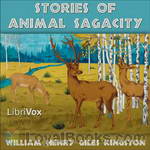 Stories of Animal Sagacity
Stories of Animal Sagacity
300+ short stories of how smart and savvy various individual animals have been seen to be, and in most cases a little moral is drawn from the story. | |
By: Carolyn Wells (1862-1942) | |
|---|---|
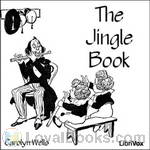 The Jingle Book
The Jingle Book
A collection of silly poetry and limericks for children. | |
By: P. R. Kincaid | |
|---|---|
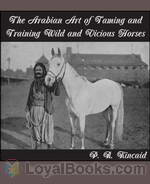 The Arabian Art of Taming and Training Wild and Vicious Horses
The Arabian Art of Taming and Training Wild and Vicious Horses
Back in the day before automobiles, a good horse trainer and veterinarian was the equivalent of “Mr Goodwrench”. A badly behaving or unhealthy equine was equivalent to breaking down on the highway or running out of gas on a lonely stretch of highway somewhere in Utah. My sources tell me that most of the training methods are ok, but stay away from the medical tips unless you are prepared to become the poster boy or girl for the local SPCA. Listen with tongue in cheek, and check with a professional before attempting any of these techniques on a real animal. | |
By: Albert Payson Terhune (1872-1942) | |
|---|---|
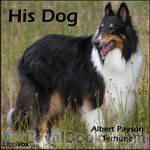 His Dog
His Dog
Albert Payson Terhune, perhaps best known for his book Lad, a Dog (later turned into a popular movie), was also a breeder of collies and a journalist. Some of his collie lines survive to this day. His Dog is a story about Link Ferris who finds an injured dog on his way home one evening. Knowing nothing about dogs, Link nurses the dog back to health and the two form a bond such as only can be formed between human and canine. Unable to locate the collie’s owner, Link christens his dog ‘Chum’ who becomes invaluable in tending to the daily needs of his meager farm... | |
By: Albert Payson Terhune (1872-1942) | |
|---|---|
 Bruce
Bruce
Albert Payson Terhune was a journalist but is probably best known as a breeder of dogs, in particular collies at his Sunnybank Kennels. Bruce charts the story of an unwanted puppy who becomes loved by the mistress of the family. He then becomes enlisted as a carrier dog in World War 1, completing heroic tasks and coming home a war hero | |
By: Marshall Saunders (1861-1947) | |
|---|---|
 Beautiful Joe
Beautiful Joe
Beautiful Joe is a real dog, and “Beautiful Joe” is his real name. He belonged during the first part of his life to a cruel master, who mutilated him in the manner described in the story. He was rescued from him, and is now living in a happy home with pleasant surroundings, and enjoys a wide local celebrity.The character of Laura is drawn from life, and to the smallest detail is truthfully depicted. The Morris family has its counterparts in real life, and nearly all of the incidents of the story are founded on fact. | |
By: Edith Nesbit (1858-1924) | |
|---|---|
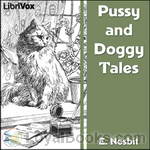 Pussy and Doggy Tales
Pussy and Doggy Tales
Charming Tales about cats and dogs. | |
By: Helen M. Winslow | |
|---|---|
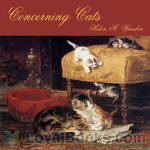 Concerning Cats
Concerning Cats
“I have known, and loved, and studied many cats, but my knowledge of her (Pretty Lady, a cat) alone would convince me that cats love people–in their dignified, reserved way, and when they feel that their love is not wasted; that they reason, and that they seldom act from impulse.” The thoughts of Helen Winslow, a thoughtful and articulate cat friend, about the cats in her life. | |
By: Cecil Henry Bompas | |
|---|---|
 Folklore of the Santal Parganas
Folklore of the Santal Parganas
This is an intriguing collection of folklore from the Santal Parganas, a district in India located about 150 miles from Calcutta. As its Preface implies, this collection is intended to give an unadulterated view of a culture through its folklore. It contains a variety of stories about different aspects of life, including family and marriage, religion, and work. In this first volume, taken from Part I, each story is centered around a particular human character. These range from the charmingly clever (as in the character, The Oilman, in the story, “The Oilman and His Sons”) to the tragically comical (as in the character, Jhore, in the story “Bajun and Jhore”)... | |
By: Robert Michael Ballantyne (1825-1894) | |
|---|---|
 Gorilla Hunters
Gorilla Hunters
Ralph Rover is happily at home from his adventure on The Coral Island and wondering if he should settle down when he receives a visit from an eccentric stranger that won't give his name. This visit starts him on a string of adventures that find him getting charged by rhinoceroses, chased by African natives, and facing down a larger-than-life gorilla on his own. Of course, this is only the start of his adventure in to the land of the gorillas. Please note: this book has some words now considered derogatory, which are used in a generic way without any derogatory meaning... | |
 Charlie to the Rescue
Charlie to the Rescue
Charlie Brooke is always rescuing others, and sometimes even himself! His latest rescue, though, could turn out to be fatal... | |
 Jarwin and Cuffy
Jarwin and Cuffy
Jarwin is an English sailor who has been shipwrecked. He is stranded on a raft with only his dog Cuffy, and land is nowhere in sight. Their food and water is running out. What can Jarwin do to save his dog's (and his own) life? | |
By: Robert Leighton | |
|---|---|
 Dogs and All About Them
Dogs and All About Them
This comprehensive guide on dog-rearing looks at dogs as more than just pets - as people's best friends. The author describes each breed of dog in a detailed and systematic way, with complete notes on show-dogs. | |
By: Howard R. Garis (1873-1962) | |
|---|---|
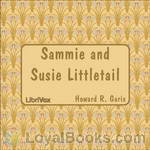 Sammie and Susie Littletail
Sammie and Susie Littletail
Once upon a time there lived in a small house built underneath the ground two curious little folk, with their father, their mother, their uncle and Jane Fuzzy-Wuzzy. Jane Fuzzy-Wuzzy was the nurse, hired girl and cook, all in one, and the reason she had such a funny name was because she was a funny cook. She had long hair, a sharp nose, a very long tail and the brightest eyes you ever saw. She could stay under water a long time, and was a fine swimmer. In fact, Jane Fuzzy-Wuzzy was a big muskrat, and the family she worked for was almost as strange as she was. (excerpt from text) | |
By: William T. Hornaday (1854-1937) | |
|---|---|
 Our Vanishing Wild Life
Our Vanishing Wild Life
We are weary of witnessing the greed, selfishness and cruelty of “civilized” man toward the wild creatures of the earth. We are sick of tales of slaughter and pictures of carnage. It is time for a sweeping Reformation; and that is precisely what we now demand. -William Temple Hornaday | |
By: Charles Dudley Warner (1829-1900) | |
|---|---|
 Summer in a Garden and Calvin, A Study of Character
Summer in a Garden and Calvin, A Study of Character
This is Warner's contemplative and humorous account of the wondrous and mysterious workings of a garden he tended for 19 weeks. After this is a essay of remembrance for Warner's beloved cat, Calvin. | |
By: J. Henri Fabre (1823-1915) | |
|---|---|
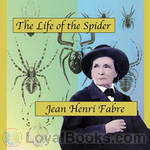 Life of the Spider
Life of the Spider
Jean-Henri Casimir Fabre was a French entomologist and author. He was born in St. Léons in Aveyron, France. Fabre was largely an autodidact, owing to the poverty of his family. Nevertheless, he acquired a primary teaching certificate at the young age of 19 and began teaching at the college of Ajaccio, Corsica, called Carpentras. In 1852, he taught at the lycée in Avignon. | |
By: Thornton W. Burgess (1874-1965) | |
|---|---|
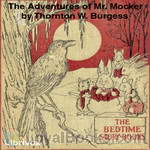 The Adventures of Mr. Mocker
The Adventures of Mr. Mocker
When an innocent blue jay starts talking in his sleep, it’s up to him to find out what’s going on in this fun, naturalistic, Southern-style children’s story. | |
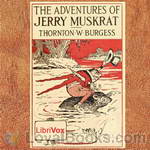 The Adventures of Jerry Muskrat
The Adventures of Jerry Muskrat
Join us as we follow Jerry Muskrat and his friends on an adventure to discover what is threatening their homeland; The Laughing Brook and The Smiling Pool. | |
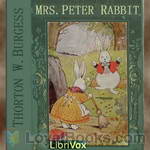 Mrs. Peter Rabbit
Mrs. Peter Rabbit
A wonderful book in which we meet the lucky little bunny who becomes Mrs. Peter Rabbit! This is one of many delightful animal books written by Thornton W. Burgess. I grew up reading and enjoying these tales of talking animals with fun and varied personalities. Peter Rabbit is a character loved by all, and this charming tale recounts the adventures of meeting, wooing, and marrying Mrs. Peter Rabbit. (Introduction by CLW Rollins) | |
 Adventures of Grandfather Frog
Adventures of Grandfather Frog
Longlegs the Blue Heron felt decidedly out of sorts. It was a beautiful morning, too beautiful for any one to be feeling that way. Indeed, it was the same beautiful morning in which Grandfather Frog had caught so many foolish green flies. Jolly, round, bright Mr. Sun was smiling his broadest. The Merry Little Breezes of Old Mother West Wind were dancing happily here and there over the Green Meadows, looking for some good turn to do for others. The little feathered people to whom Old Mother Nature has given the great blessing of music in their throats were pouring out their sweetest songs... | |
 Adventures of Old Mr. Toad
Adventures of Old Mr. Toad
The Adventures of Old Mr. Toad is another in the long line of children's books by conservationist Thornton W. Burgess. In this book, we follow the adventures of Old Mr. Toad as he joins the Spring Chorus at the Smiling Pool, shows off his babies, displays his special tongue to Peter Rabbit and has a very special encounter with Buster Bear. We also learn little lessons about life such as pride can burst like a great big bubble, your friends' hidden talents may surprise you and it is considered impolite to watch someone change his clothes - especially when he eats them. | |
 Adventures of Danny Meadow Mouse (dramatic reading)
Adventures of Danny Meadow Mouse (dramatic reading)
Danny begins his tale regretting the length of his tail until he is corrected by Mr. Toad. Then he has a series of stalkings by Reddy and Granny Fox. He is captured by Hooty the Owl and escapes mid-flight to Peter Rabbit's briar patch. Peter goes to Farmer Brown's peach orchard and gets caught in a snare and barely escapes himself. Finally Danny gets trapped in a tin can and must use his wits to escape Reddy Fox again. | |
 Adventures of Lightfoot the Deer
Adventures of Lightfoot the Deer
The Adventures of Lightfoot the Deer is another set of children’s stories by the conservationist, Thornton W. Burgess. More serious than some of Burgess' other children's books, much of this book chronicles the tense predator-prey relationship of a human hunter and Lightfoot the Deer during the autumn hunting season. Later, Lightfoot discovers a hunt of a different kind. | |
 Adventures of Prickly Porky
Adventures of Prickly Porky
A stranger from the North Woods has just arrived in the Green Forest causing a great stir among the woodland creatures who live there. They quickly discover that this odd fellow with the barbed spikes in his fur is the loyal and brave Prickly Porky the Porcupine. Not long after Prickly Porky arrives, a bit of early morning fun leads to a forest mystery that draws friends and foes alike into the investigation of an unknown headless, tailless, whirling creature seen only at sunrise on the hill by Prickly Porky's home... | |
 Mother West Wind "How" Stories
Mother West Wind "How" Stories
Peter Rabbit has many questions. How did Howler the Wolf get his name? How did Lightfoot the Deer learn to jump? How did Drummer the Woodpecker come by his red cap? When Peter asks Grandfather Frog, Grandfather Frog tells him a story of long ago. This book is a collection of those stories told by Grandfather Frog and many others. | |